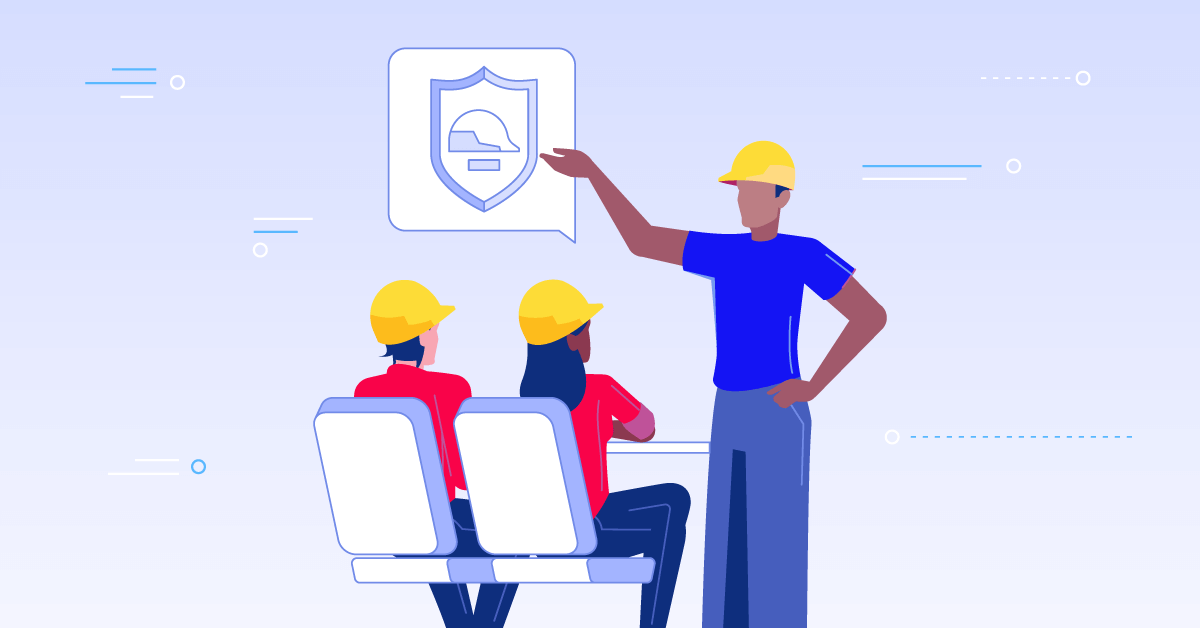Minimize Distractions In The Social Learning Environment
The average person spends many hours on social media every week. Some online learners may even meet this quota on a daily basis. They use these tools to catch up with friends, read the latest news, even to promote their business ventures.
However, it’s also a great place to expand knowledge and hone their skills. The secret is knowing how to separate personal posts, tweets, and comments from the social learning side of things. Here are 8 top tips to make sure that the “learning” in the social learning environment actually serves your training goals.
1. Set Ground Rules In Advance
Online learners may be more tempted to chat with friends and peruse posts if there are no set guidelines to follow, which is why it’s crucial to establish ground rules in advance and make the social learning environment a regulated forum in which training occurs more organically. In fact, you may want to pin them to the top of your social media feed or eLearning forum as a subtle reminder.
These guidelines should center on online learner expectations, recommendations on how to use the social learning tools, and what they should get from the eLearning experience as a whole. For example, online learners are required to break into teams, solve the assigned collaborative eLearning activities, and then report their findings.
2. Emphasize The Learning Objectives And Outcomes
Ideally, each activity in the social learning environment should tie into a specific objective, goal, or desired outcome. More importantly, online learners must be aware of the objectives before they log in to the eLearning platform.
Effective social learning environments are purpose-driven. Emphasize how the collaborative activity is going to help your learners in the real world, as well as the benefits they can expect to receive by actively participating. For instance, online discussions will help them improve their task-based knowledge and proficiency. Therefore, the conversation should concentrate on related topics and ideas.
3. Incorporate Frequent Breaks
The temptation to check out Facebook and Twitter feeds may be too strong for some. However, these online learners are more likely to engage in the social learning environment if there’s an “unwind” period waiting at the end. Longer social learning activities may lead to restlessness and boredom.
For this reason, it’s best to incorporate frequent breaks wherein learners can explore other social media pages and sites. As an example, a twenty-minute research session is followed by a ten-minute personal break. Then they can return to the social learning environment refreshed and ready to participate.
4. Create Dedicated Social Media Groups
Social media groups usually center on a particular topic or interest. Create a closed group for your online learners that allow them to share ideas and opinions in a more private setting. This also helps to remove external distractions, as the online discussion is focused on a dedicated social media page. Alternatively, set up an eLearning blog or forum where you don’t have to contend with other posts, and therefore create your very own social learning environment.
5. Post Frequent Prompts And Questions To Spark Online Discussion
Boredom is the predecessor of distraction. When online learners begin to lose interest, external influences can easily sway their attention. However, thought-provoking prompts and questions help them focus on the task at hand. It gets the mental gears turning, which allow online learners to reflect on the topic and tie it into real-world applications.
For example, they are able to see how the subject matter will help them solve an everyday problem, or look at the ideas and concepts from a different viewpoint.
6. Hold Their Attention With Compelling Images And Links
Certain online learners may be more likely to engage if there are compelling visuals and graphics involved or links that direct them to relevant articles, as well as eLearning videos that they can view online. Whenever possible, add meaningful images to your social media and blog posts to catch their eye. Just make certain that you check links regularly to verify they’re still active. Otherwise, online learner frustration may become a distraction in-and-of-itself.
7. Integrate Online Group Collaboration Projects
Invite your online learners to break off into groups and assign them a task or real-world problem. They must work together to arrive at a common consensus, using the social learning tools that are available. You should also encourage them to appoint a team leader. For more involved online group collaboration projects, incorporate Project Management online platforms so that they can coordinate their efforts. It’s also wise to provide them a list of recommended online resources and guidelines.
Group collaboration projects eliminate external distractions in social learning environments by giving learners a common goal to work toward. They devote their full time and attention to the task, which leaves little room for Farmville and Words with Friends.
8. Follow Up With eLearning Assessments And Tie-In Activities
eLearning assessments and tie-in activities serve two very important purposes. First and foremost, they improve learner engagement. Online learners know that they’ll have to put their knowledge to the test. As a result, they are more likely to actively participate in online discussions to get the information they need. Secondly, it improves knowledge retention and recall.
Online learners must put their newfound knowledge and skills into practice after the fact, which allows them to review and reflect on the key takeaways. It’s also a good idea to conduct pre-assessments so that they can see how far they’ve come, thus boosting their motivation and inspiring them to participate in the social learning environment.
These 8 tips can help you unlock the power of social learning and give your online learners the gift of peer-based feedback in eLearning. They can also seize the opportunity to share experiences, improve comprehension, and gain a new perspective. The trick is getting them to focus on what’s truly important, which is to broaden their educational horizons through free-flowing information exchange.
Do you know how to integrate social learning into your online corporate training strategy? Learn how you can incorporate these 10 social learning strategies in your corporate eLearning!


